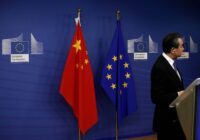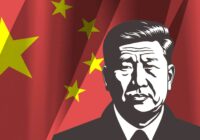Around 20 years into the new millennium, everything about our lives and surroundings is changing at an incredible pace. The ways we work, play, study, communicate, spend and earn are rapidly evolving to bear little resemblance to how we’ve lived through most of modern times, let alone history. Experts call this the Fourth Industrial Revolution, expecting it to change the world in ways mass production of steam engines, steel, automobiles and electronics did over the past two centuries.
These innovations drastically altered societies that pioneered them, both physically as well as socio-economically. Changes such as growth of factories and cities, lengthening of lifespans and the irreversible damage to the environment befit the term “revolution” for each of their respective periods. Now, on the brink of something equally massive, we must ask ourselves who will be affected by the Fourth Industrial Revolution, and how? Can we call this phase a revolution too, or is it different this time around?
Disruptive Innovation
The Fourth Industrial Revolution is being propelled by two fundamentals: powerful, accessible computing and promising new materials. Scientists and engineers have leveraged these fundamentals to build new approaches to solving problems, such as additive manufacturing, machine learning and big data, artificial intelligence, automation, the “internet of things,” etc. Technologists and entrepreneurs have purposed these approaches into innovations that are changing our lives, such as facial and gait recognition, e-learning, CRISPR-Cas9 gene editing technology, electric vehicles and smart homes, among numerous others.
Previous waves of innovation benefitted humans by increasing savings of time and energy across occupations. For instance, steam engines became widely adopted because they gave greater outputs than human or animal labor for a fixed supply. Electronic components became widespread because their utilization of energy was more efficient than that of mechanical machinery. Modern medicine was successful because, along with lengthening lifespans, it also made humans more capable and productive.
Hence even when these innovations replaced human labor, they brought newer possibilities for the workforce with newer skills to exploit. Countries that nurtured robust systems to develop human capital, such as Germany and Japan, benefitted from multiple waves of innovation as they could efficiently retrain the labor force. Others that relied on abundance of resources, such as Argentina, lost their importance in a world economy that started prizing new-age goods over age-old requirements.
The Fourth Industrial Revolution, on the other hand, is purposed to unlock newer possibilities for consumption. The workforce doesn’t need to facilitate the transition from a 20th-century lifestyle to a 21st-century fantasy, because the motivation for innovation doesn’t arise from human vocations. Due to its radically disruptive nature and breakneck speed, it can be understood by the select few who are at the frontiers of science and technology.
Conversely, because it doesn’t primary seek to augment occupational abilities of humans, it doesn’t require much contribution from those who can’t grasp it. Hence, the Fourth Industrial Revolution brings new goods and services to consume without developing the ability to consume them.
Boons to the Blessed, Despair to the Rest
To a large extent, the Fourth Industrial Revolution is guided by the changing societal and environmental conditions of the 21st century. For instance, research on electric vehicles is strongly motivated by concerns over CO2 emissions accelerating climate change. Research on biodegradable plastics is driven by the realization that plastic waste is contaminating marine life and food chains. However, despite the necessity of these measures, aggressive technological solutions to complex problems may risk widening the gap between developed and underdeveloped societies. For the greater purpose of solving global problems, many trends of the Fourth Industrial Revolution may leave the have-nots worse off than they were before.
Stories about the social and environmental impacts of the surge in mining of rare materials such as lithium, cobalt and graphite due to demand from new technologies have already been well documented. Despite supporting solutions that help mitigate climate change, these technologies are hurting people who are at the very beginning of their supply chains. In allowing for unsafe working conditions, child labor, land grabs and water acquisition, and permanent damage to public health, the Fourth Industrial Revolution does not offer enough benefits to offset such losses.
Even companies that promise to source their materials sustainably acknowledge that present-day supply chains are too convoluted to avoid these realities. After all, most supplies are dictated by large European, British or Chinese companies whose operations test regulations and lack transparency in countries that give little room for corrective political measures. From their perspective, such functioning keeps new technology affordable and better equipped for solving global challenges. Despite this, corporations do little to solve problems faced by those who find themselves in circumstances that the rest of the world has already overcome.
Back to the Future
The Fourth Industrial Revolution is coming at a time of a major global realignment. East Asian companies are consistently pioneering innovations in several fields, ahead of their Western counterparts. Chinese government-funded advances in technology, both in China and beyond, have made the news headlines. This gives the impression of a new beginning, with a new world order to look forward to. However, upon careful examination, this change of the centers of power doesn’t seem quite so revolutionary.
For thousands of years leading up to the First Industrial Revolution, China, India and other East Asian countries were the world’s leading economies. Their finished products, natural resources and scientific advancements fueled centuries of trade, discovery and conquest in Europe and the Middle East. The First Industrial Revolution inverted these scales of balance in favor of smaller Western societies that explored boldly, collaborated efficiently and competed ruthlessly to overwhelm far more resourceful empires. Their focus, organization and planning triumphed over millennia of glory and pomp rooted in richer fortunes.
The return of the center of gravity of global trade, technology and scientific advances to East Asia is not the same story retold centuries later. It is happening because after centuries of humiliation, these countries are reindustrializing with a vengeance. Physical factors already favor this, with large, but not necessarily overpopulated, demographics, plentiful natural resources and competitive, but also collaborative, cultural and trade relations. Judicious administration and planning have indeed accelerated this comeback much faster than the Western world would’ve anticipated a few generations ago. Colleges are excelling, new roads and trains are glittering, and internet connections are exploding across Asia today.
But the underlying agents always favored this as an inevitable fate. Even in a world of slower growing economies, China’s tech giant Huawei was destined to make better phones than Apple eventually. This is rooted in a society that is materially more prosperous.
A Brave World, But Not a New One
Much more than mere technological change, industrial revolutions are known to transform the paradigm of dynamics and interactions between different societies around the world. Technological innovation has been a continuous process where different groups have taken a lead at different times throughout history. The word revolution, true to its definition, finds its place in the dictionary because of the ability of technology to disrupt the existing order and produce new champions.
The First Industrial Revolution shifted the center of gravity of the world’s technological, economic and political powers from Asia to Western Europe. It gave people in small countries guns, ships and wealth to bring huge empires to their knees and vanquish tribes. The Second Industrial Revolution redefined millennia-old relations between employers and laborers. It made lives longer and occupations more productive and interdependent on each other. People became more conscious of and dedicated toward collective identities, thus giving deprived groups more power to negotiate.
The next wave of innovation made the world a smaller place, with easier travel and more rapid and accessible communication. It made merit and excellence more substantive than privilege by birth and established the basis of our modern knowledge-based society.
The Fourth Industrial Revolution might not produce new champions. It favors sparsely populated societies, most of which are more developed due to a focus on reducing reliance on humans rather than augmenting their abilities. Problems unique to overpopulated societies, most of which as less developed than the global average, don’t find direct solutions from approaches of this wave of innovation. Hence, there are risks of increasing inequality rather than bringing different societies to a level field and changing the balance of power.
The Fourth Industrial Revolution also demands radically new knowledge and skills that existing systems can offer only to those who are able to grasp it. Its technology arises from dedicated scientific research on a massive scale. This is different from previous instances of innovation, where tinkering produced technological solutions and motivated scientific research to optimize and seek explanations. This present wave of innovation does not give garage mechanics too many opportunities to compete with mammoth firms. In some sense, Schumpeter’s words have struck true: Innovation in the fourth industrial age may be dominated by the privileged, not revolutionaries who can upend the existing order.
The fourth wave of industrialization hence falls short of being a true revolution. It neither changes the dynamics between people and societies, nor does it offer prosperity to those who haven’t found their place in the sun yet. Should we still stick by its name, we must find ways to extend its success beyond these limitations.
The views expressed in this article are the author’s own and do not necessarily reflect Fair Observer’s editorial policy.
Support Fair Observer
We rely on your support for our independence, diversity and quality.
For more than 10 years, Fair Observer has been free, fair and independent. No billionaire owns us, no advertisers control us. We are a reader-supported nonprofit. Unlike many other publications, we keep our content free for readers regardless of where they live or whether they can afford to pay. We have no paywalls and no ads.
In the post-truth era of fake news, echo chambers and filter bubbles, we publish a plurality of perspectives from around the world. Anyone can publish with us, but everyone goes through a rigorous editorial process. So, you get fact-checked, well-reasoned content instead of noise.
We publish 2,500+ voices from 90+ countries. We also conduct education and training programs
on subjects ranging from digital media and journalism to writing and critical thinking. This
doesn’t come cheap. Servers, editors, trainers and web developers cost
money.
Please consider supporting us on a regular basis as a recurring donor or a
sustaining member.
Will you support FO’s journalism?
We rely on your support for our independence, diversity and quality.






